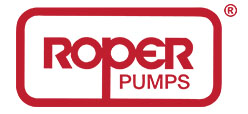Articles Page 3
Hydrostatic transmissions – making sense of case drain flow – Part 3
In my previous article,
I described the technique for determining the condition of a hydrostatic transmission using case drain flow, and discussed the role and influence of a flushing valve when doing this.
In response to these articles, some readers were still confused about the influence of the charge pump when determining case drain leakage.
One reader held the view that, assuming the charge pump relief vents into the case of the motor and the motor case drain line is isolated from the pump, then transmission pump leakage is determined by subtracting charge pump flow from the total flow from the pump case. For example, if total charge pump flow was 10 GPM and the flow-meter in the pump case drain line was reading 15 GPM then transmission pump leakage would be 5 GPM (15 – 10 = 5).
This is incorrect because it suggests that a hydrostatic transmission can leak more than the total available flow from its charge pump. It cannot. That is, it is impossible for the flow meter in the pump case drain line to read 15 GPM when the total available flow from the charge pump is only 10 GPM, as in the above example.
The reason is simple. Because the function of the charge pump is to make up losses from the loop through internal leakage, if total losses exceed available charge pump flow, the transmission will cavitate. If in the above example, the transmission was leaking 5 GPM more than the total available flow from the charge pump, there would be a serious deficit of fluid in the loop. In practice, the transmission would destroy itself through cavitation before it got to this point.
Let me explain this another way. Let’s assume we have a transmission that has a volumetric efficiency of 100%, that is, the pump and motor have no internal leakage. The loop has a total volume of two gallons and is full of fluid. Because there is no internal leakage there is no need for a charge pump.
The pump is stroked to maximum displacement, which circulates the two gallons of fluid in the loop at a rate of 50 GPM. Because it’s a closed loop, with no leakage, the flow from pump to motor is 50 GPM and the flow from motor to pump is 50 GPM.
Now let’s introduce internal leakage of 0.5 GPM in both pump and motor. The result is that, with no charge pump to replenish the loop, after one minute there will only be one gallon of fluid left in the loop (the other gallon will have leaked back to tank). Within a second of the transmission starting to leak, the transmission pump will start to cavitate and the severity of this cavitation will increase with each passing second until the transmission destroys itself.
Now let’s install a charge pump with a flow rate of 1 GPM in the circuit. Problem solved, temporarily at least. With 1 GPM leaking out of the loop and 1 GPM being replenished by the charge pump the status quo is maintained… until wear causes the internal leakage of the transmission to exceed 1 GPM.
As you can see, it’s not possible for the internal leakage of a hydrostatic transmission to exceed the flow rate of its charge pump. Charge pump flow rate is typically 20% of transmission pump flow rate. This means that volumetric efficiency can drop to 80% before the transmission will cavitate and destroy itself. The trick is to overhaul the transmission before this point is reached.
HYDROSTATIC/HYDRAULIC REPAIR PARTS – HYDROSTATIC/HYDRAULIC PUMP PARTS – HYDROSTATIC/HYDRAULIC EQUIPMENT PARTS
CALL US FOR YOUR REPAIR ON DIFFICULT TO LOCATE HYDRAULIC TRANSMISSION PUMP MOTOR REPAIR PARTS FOR… MITSUBISHI, KAWASAKI, DAEWOO, DYNAPOWER, LINDE, REXROTH, UCHIDA, YAMAHA, HITACHI, KOMATSU, LIEBHERR, POCLAIN, VOLVO, VICKERS, CESSNA, HYDROMATIK, SUNDSTRAND AND EATON CLOSED LOOP AND OPEN LOOP HYDRAULIC DRIVE PUMPS AND MOTORS PARTS.
Some of the the brands we repair






